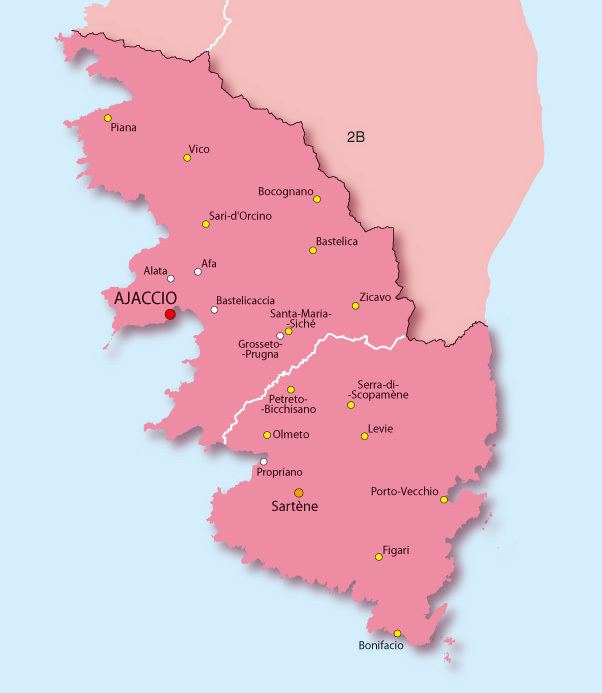Department number 2A Area 4,014 km² Population 149,234 (2013) | Time zone CET (UTC+1) Arrondissements 2 | |
 | ||
Destinations Ajaccio, Bonifacio - Corse‑du‑Sud, Porto‑Vecchio, Propriano, Zonza Points of interest Lavezzi Islands, Maison Bonaparte, Calanques de Piana, Scandola Nature Reserve, Filitosa | ||
Corse-du-Sud ([kɔʁs.dy.syd]; Corsican: Corsica suttana) (English: South Corsica) is a department of France consisting of the southern part of the island of Corsica.
Contents
- Map of Corse du Sud France
- History
- Geography
- Demographics
- Culture and politics
- Departemental Council
- Tourism
- References
Map of Corse-du-Sud, France
History
The department was formed on 15 September 1975, when the department of Corsica was divided into Haute-Corse and Corse-du-Sud. Its boundaries correspond to the former department of Liamone, which existed from 1793 to 1811.
The department hit the head-lines at the end of the twentieth century with the assassination at Ajaccio of the prefect Claude Érignac on 6 February 1998.
Geography
The department is surrounded on three sides by the Mediterranean Sea and on the north by the department of Haute-Corse.
The entire island of Corsica is mountainous with many beautiful beaches.
Demographics
The people living in this subregion are called "Southerners" (Suttanacci).
Culture and politics
Corsicans are a fiercely independent people. However, on 6 July 2003 a referendum rejected increased autonomy by a very small majority, with 50.98 percent of those voting being against and 49.02 percent for. This was a major setback for the French Minister of the Interior, Nicolas Sarkozy, who had hoped to use Corsica as the first step in his decentralization programme.
Departemental Council
The President of the Departemental Council is Pierre-Jean Luciani, who has held the office since 2015.
Tourism
South Corsica enjoys the mild and hot climate of Mediterranean Islands, and therefore attracts a lot of tourists. Its gem is the city of Bonifacio, part of which is built upon a huge cliff. But inside mountains are beautiful as well, especially the Aiguilles de Bavella, some naked, needle-like rocks.
